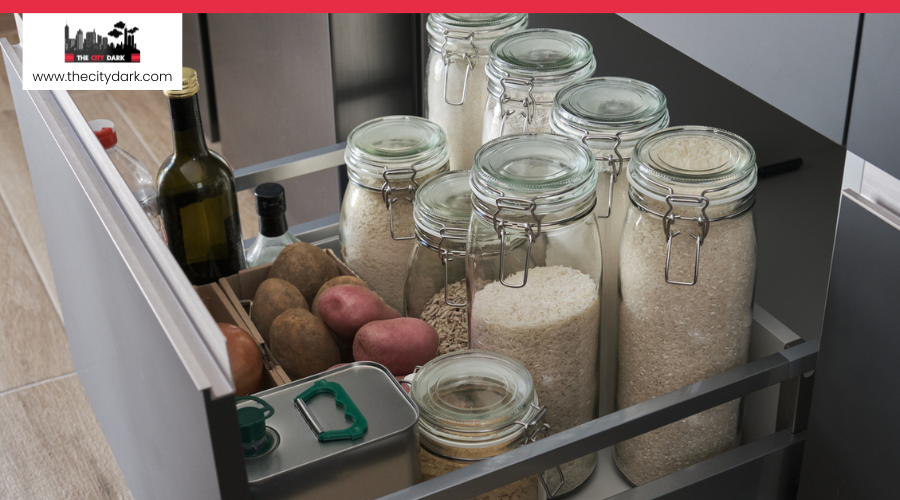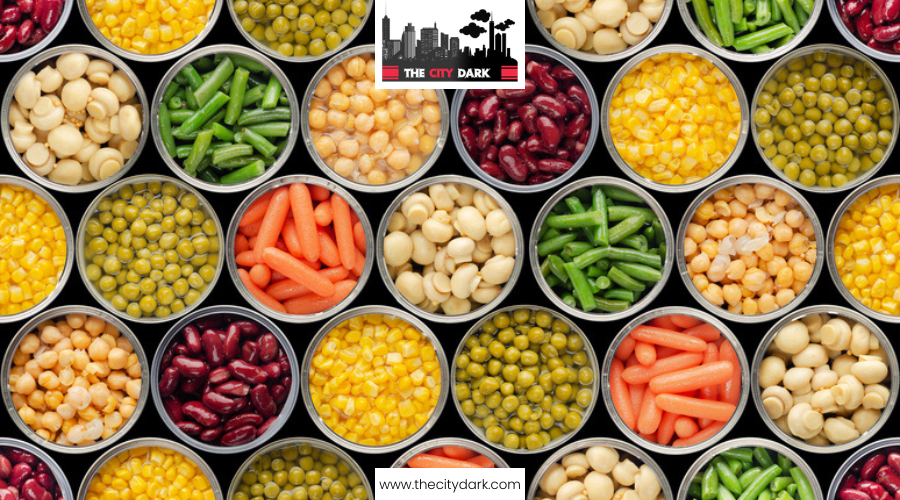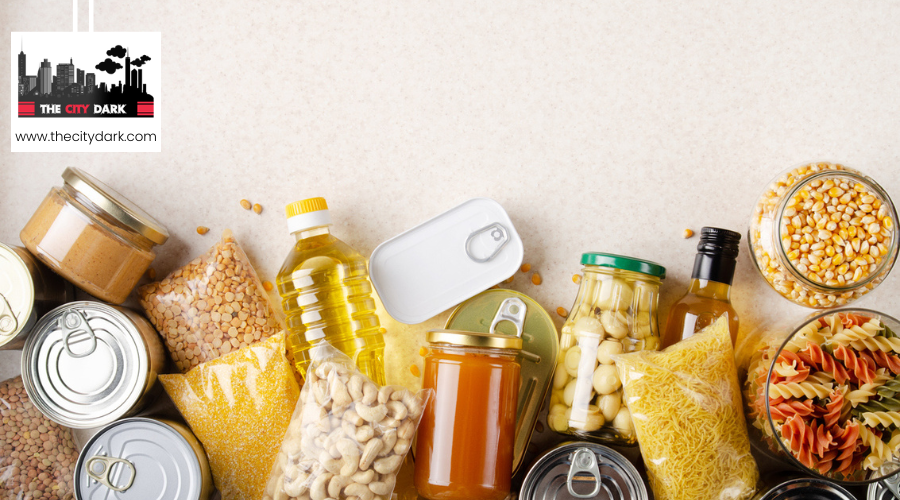How Long Does Dehydrated Food Really Last?
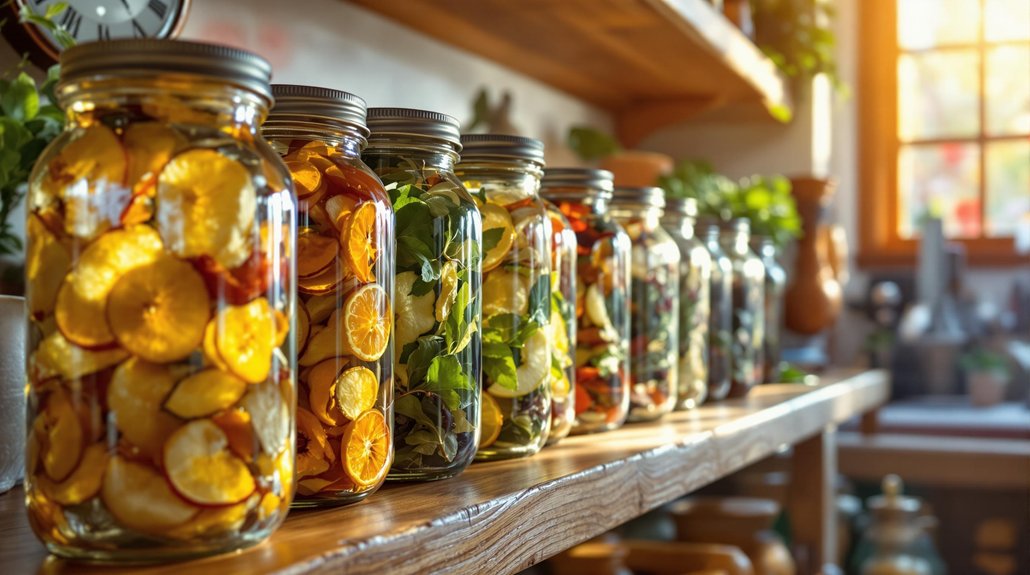
Dehydrated food is a go-to staple for preppers, hikers, and anyone building a long-term food supply. It's lightweight, space-saving, and—most importantly—built to last. But just how long does dehydrated food really stay good?
While many packages claim shelf lives of 10, 20, or even 30 years, the truth depends on a few key factors like storage conditions, packaging quality, and the type of food itself. In this article, we’ll break down the real shelf life of dehydrated foods, how to tell if they’ve gone bad, and tips to help you store them properly for maximum longevity.
Understanding Dehydrated Food
Dehydrated food has become a go-to option for campers, preppers, and everyday households—and for good reason. The process of dehydration removes moisture from foods like fruits, vegetables, and meats, which slows down spoilage and significantly extends shelf life.
From chewy dried fruits to lightweight, shelf-stable veggies, dehydrated foods often have concentrated flavors and long-lasting nutritional value. On average, these items can last anywhere from 4 to 12 months, depending on the food type and how well it's stored.
To maximize shelf life, store dehydrated foods in airtight containers in a cool, dark, and dry place. When stored properly, many dehydrated items retain their taste, texture, and nutrients—making them a smart and dependable addition to any pantry or emergency food supply.
Shelf Life of Dehydrated Foods
Understanding how long dehydrated foods last is key to making the most of your food storage plan. The primary reason dehydrated foods have extended shelf lives is due to the removal of moisture—this dramatically slows the growth of bacteria, mold, and yeast that cause spoilage.
Here’s a breakdown of common dehydrated food types and their typical shelf lives under proper storage conditions (cool, dark, dry, and airtight):
| Food Type | Typical Shelf Life | Extended Storage Tips |
|---|---|---|
| Fruits | Up to 12 months | Store in airtight containers or vacuum-seal for longer life |
| Vegetables | 6 to 12 months | Use oxygen absorbers to help extend shelf life |
| Dehydrated Meats | 1 to 2 months (unsealed) Up to 6 months (vacuum-sealed) | Vacuum-seal and freeze for longer-term storage |
| Grains, Beans, Rice | Up to 1 year | Store in sealed Mylar bags with oxygen absorbers |
| Commercial Dehydrated Meals | 10 to 25+ years | Use freeze-dried or nitrogen-packed products in Mylar bags with oxygen absorbers |
Key Tip: Shelf life is heavily influenced by how food is stored. Exposure to light, heat, or humidity can reduce longevity significantly. For maximum freshness, always use airtight containers, vacuum sealing, and store in a cool, dark location.
If you’re preparing for long-term needs, professionally packaged dehydrated meals are your best option. Many of these are designed to last 25 years or more, especially when stored in Mylar bags with oxygen absorbers and sealed inside food-grade buckets.
Factors Influencing Longevity
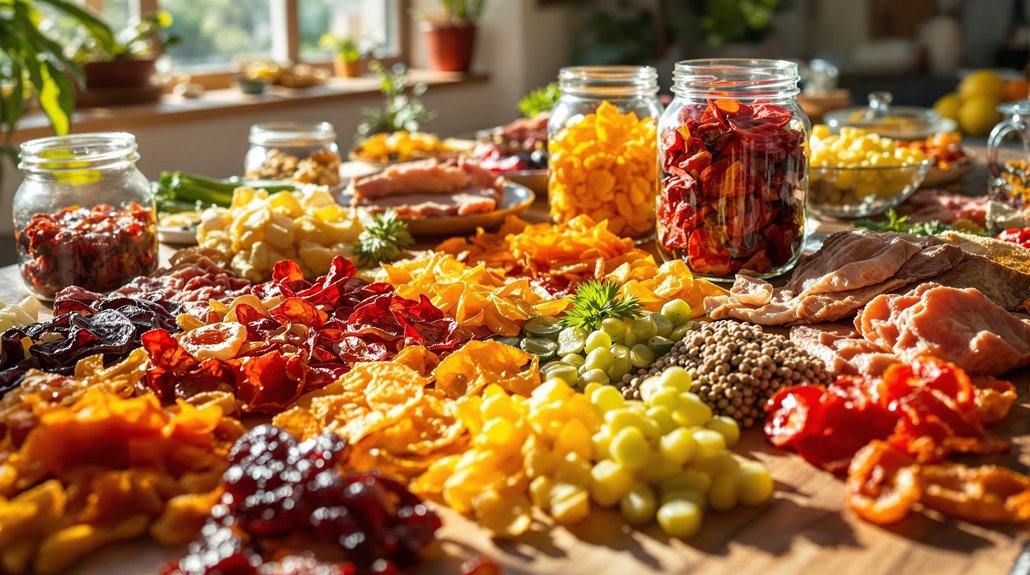
To maximize the shelf life of dehydrated foods, it's important to understand the key factors that affect their longevity. Proper handling and storage can mean the difference between a few months and several years of preservation.
1. Moisture Content
Moisture is the biggest threat to dehydrated foods. Even small amounts can lead to mold growth and spoilage. Ensure foods are fully dried before storing, and keep them in low-humidity environments.
2. Oxygen Exposure
Oxygen can degrade food quality over time, causing oxidation, rancid odors, and nutrient loss. Use oxygen absorbers in sealed containers to protect food from air exposure and extend freshness.
3. Light Exposure
Light, especially UV rays, can cause photodegradation, which affects both the flavor and nutritional content of stored food. Store dehydrated foods in opaque or dark containers in a cool, dark place.
4. Temperature
Cooler temperatures help preserve food by slowing down bacterial and enzymatic activity. Aim to store dehydrated foods at temperatures below 70°F (21°C). Avoid storing them in areas prone to heat spikes, like garages or attics.
5. Container Quality
Always use airtight, insect-proof containers to prevent contamination and spoilage. Mylar bags, vacuum-sealed pouches, and food-grade buckets with tight-fitting lids are excellent choices.
6. Protection Against Insects
To avoid insect infestation, especially for long-term storage, use insect-resistant containers and store food off the floor in a clean, dry environment.
7. Freezer Storage (Optional)
For added protection, particularly for high-fat foods or long-term reserves, consider storing dehydrated food in freezer-safe bags. This provides an extra layer of defense against heat, pests, and oxidation.
By managing these factors carefully, you can significantly extend the shelf life and quality of your dehydrated food supply.
Effective Storage Techniques
Dehydration is a versatile and space-efficient method for preserving food, making it an excellent choice for long-term storage solutions. But proper storage is essential to keep dehydrated foods fresh, safe, and shelf-stable for as long as possible.
With the right methods, you can significantly extend their usability and reduce the risk of spoilage.
1. Use Airtight Containers
Store dehydrated foods in airtight containers to protect them from moisture and oxygen, two major contributors to spoilage. Vacuum-sealed bags, canning jars, and Mylar bags with oxygen absorbers are all excellent choices.
2. Choose the Right Storage Location
Keep your food in a cool, dry, and dark place—such as a pantry, basement, or cupboard. Exposure to heat, light, and humidity can break down nutrients, fade color, and shorten shelf life.
3. Add Oxygen Absorbers
For long-term storage, include oxygen absorbers inside your packaging. These small packets help eliminate remaining oxygen, preserving flavor, texture, and nutritional value.
4. Label and Rotate Stock
Label each container with the packing or expiration date, and use the first-in, first-out (FIFO) method to rotate your stock. This ensures you use older food before it loses quality.
5. Check for Spoilage
Inspect your food regularly for any signs of spoilage, such as odd smells, discoloration, moisture, or packaging damage. Catching these issues early helps avoid wasting your stored supply.
By following these techniques, you’ll keep your dehydrated foods in excellent condition—ready to use whenever you need them, whether for everyday cooking or emergency situations.
Dehydrated Foods for Outdoor Adventures
Whether you're heading out on a hiking trip, camping getaway, or a multi-day backpacking journey, dehydrated foods are an ideal travel companion. Thanks to their lightweight, compact nature, they’re easy to pack and carry—perfect for saving both space and energy on the trail.
Dehydrated fruits like apples, bananas, and raisins offer a quick, nutritious boost, while dried vegetables help round out meals with essential vitamins and minerals. For longer expeditions, consider commercially packaged dehydrated meals (like chili mac or pasta primavera), which can last up to 25 years and provide a reliable, ready-to-eat food source with minimal preparation.
To extend the shelf life of homemade dehydrated foods, store them in airtight containers in a cool, dry place. Adding oxygen absorbers helps protect against moisture and spoilage, keeping your food fresh and safe for extended use.
Don’t overlook pantry staples like dried beans, which can last over 10 years when stored properly. They’re high in protein, versatile in recipes, and incredibly cost-effective—making them a smart choice for both outdoor adventures and long-term food storage.
With the right selection and storage methods, dehydrated foods will keep you fueled, nourished, and prepared—wherever your adventure takes you.


